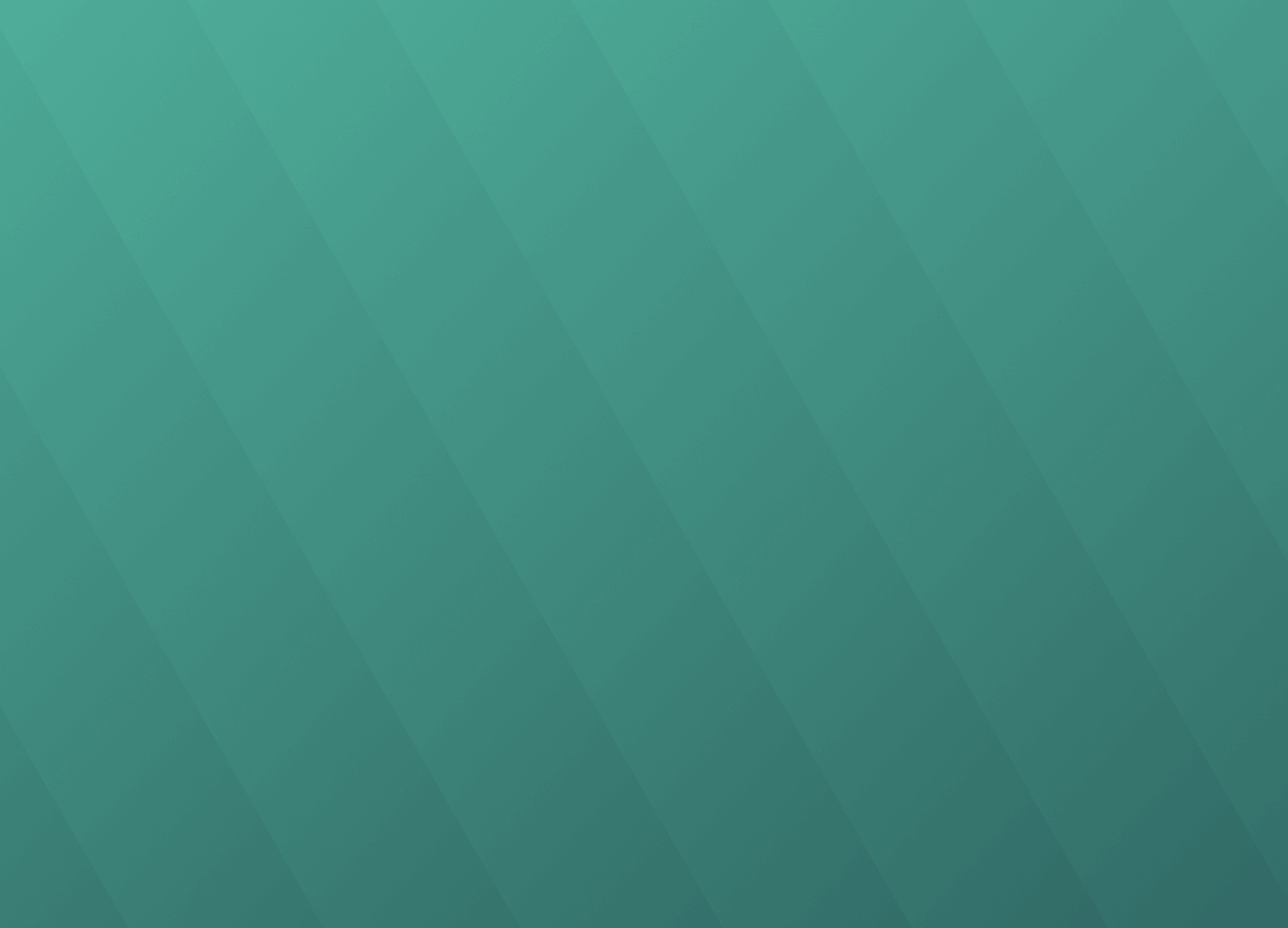Introduction
Pay equity is the concept of paying employees without regard to gender or race/ethnicity or other categories protected by law (such as national origin or sexual orientation).
Incorporating pay equity into your compensation structure is easier said than done. It requires top-down commitment, a culture deeply committed to workplace equity, and like any other business function, it requires plan setup and strategy, with important metric monitoring and management. As the saying goes, “what gets measured, gets managed.”
If you are accessing this guide, you have no doubt taken preliminary steps toward achieving pay equity at your organization. This could be as rudimentary as conducting a pay equity analysis. However, persistent regulatory activity across the globe is adding increased pressure to now share the results of those pay equity analyses.
Conducting a pay equity analysis is foundational to any pay transparency strategy, and will make the guide more applicable to your unique efforts. If you have yet to conduct a pay equity analysis, or simply want to learn more about Trusaic’s market-leading methodological approach to achieving authentic pay equity, access our Pay Equity Deep Dive Blog Series.
Let’s get started
Once you’ve conducted a pay equity analysis, the concept of pay transparency comes into focus. If you are accessing this guide you likely fall into one of two categories:
- You are required by law to share salary ranges on job postings or regularly report employee pay data.
- You are not required by law to share employee compensation information but see increased pay transparency as a critical component of your total rewards and talent management strategy.
No matter where you are in your pay transparency journey, how you go about communicating your pay equity story is crucial and will determine how the world will evaluate your efforts. Communicating pay equity to stakeholders is key and special attention should be given to your many different audiences. We created this guide to:
- Assist you in identifying where you are in your pay transparency journey.
- Determine what level of transparency your organization is aiming for.
- Walk you through the process of constructing your own contextual narrative based on the previous two items.
- Provide you with tips on how to share your unique narrative in a thoughtful and strategic manner to your designated stakeholders.
In this guide we will define key terms and highlight key distinctions – critical to understanding where you are in your pay transparency journey. Then provide you with practical, actionable insights to develop your pay transparency strategy and communication plan for all relevant stakeholders. At the conclusion of our guide you will have clarity on how to successfully develop and implement your unique pay transparency contextual narrative. This will position your organization to thrive as the working world tilts toward the time of transparency.
Pay transparency overview
As more jurisdictions come online with pay transparency and pay data reporting laws, a web of redundant terminology is formed that can cause confusion. For instance, the EU Pay Transparency Directive has vastly different (and more expansive) requirements than, say, Maryland’s pay transparency law.
Additionally, California’s law is far more expansive than Maryland’s in that it has a pay transparency and pay data reporting component. However, it doesn’t require employers to disclose gender pay gaps, as the EU Directive does.
Most jurisdictions have some form of a pay equity law in place but how it is defined and interpreted varies. With that in mind, let’s define some terms and pin down what we mean when we refer to “pay transparency.”
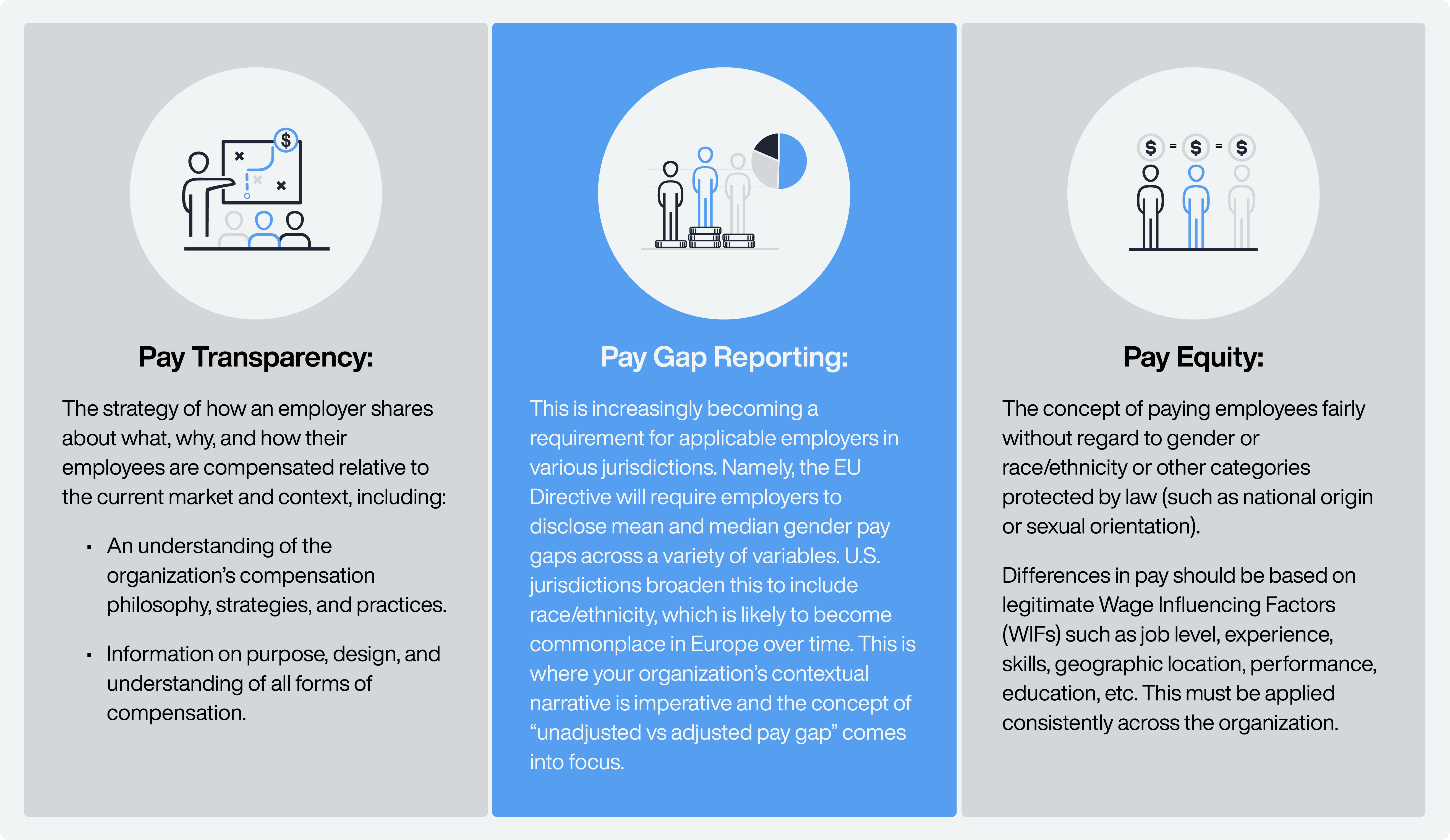
In its 2020 Workplace Equity Study, WorldatWork divided pay transparency into five levels and had organizations select which level they fell into at the time.
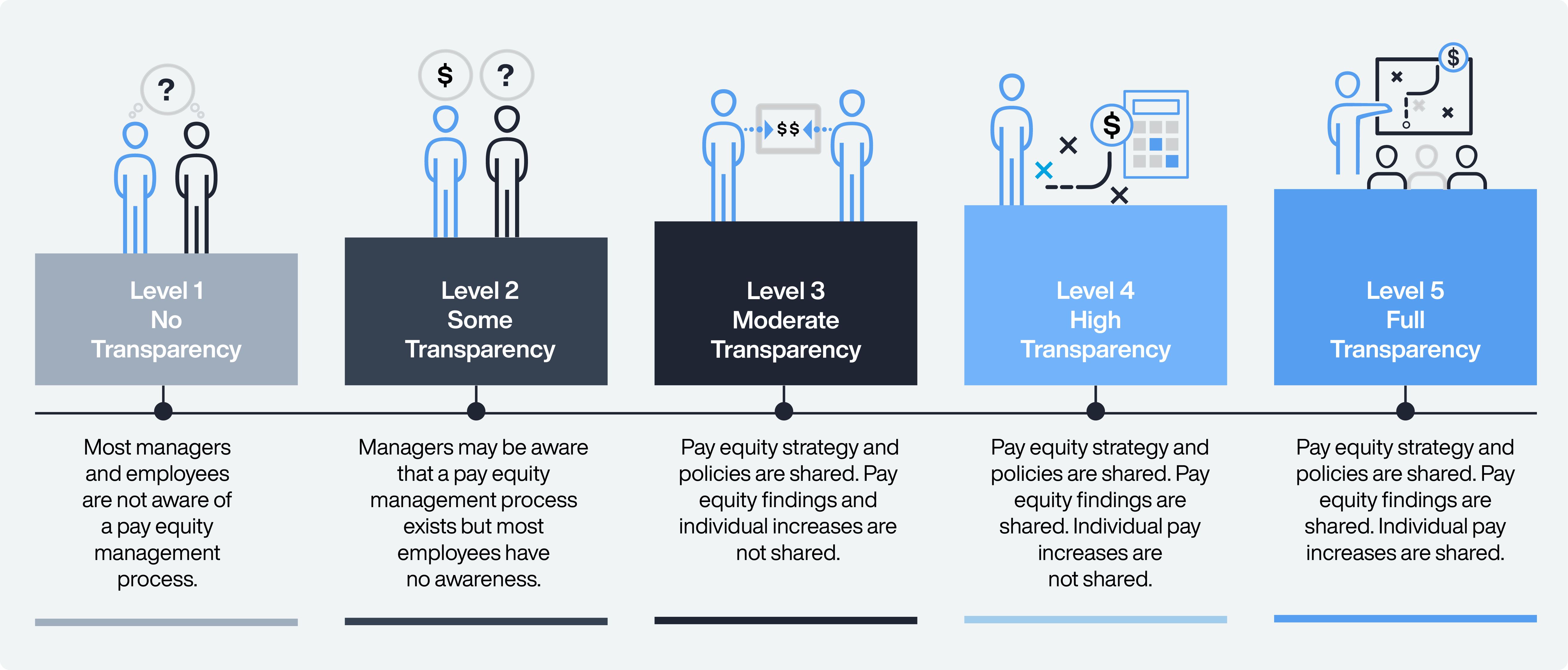
The study found that 65% of organizations fell in Levels 2 and 3, while 16% resided in Levels 4 and 5. Since the study was conducted, 11 U.S. states have passed pay transparency legislation, as has the European Union. Thus, it’s likely those percentages have all trended up and that the reported 19% of organizations in Level 1 has decreased significantly.
The transparency trend isn’t likely to slow down anytime soon. It’s estimated that by 2026, 50% of U.S. workers will be covered by a pay transparency law. The EU Directive adds pay data reporting and transparency requirements to 14 additional member states and amends the reporting requirements in the 13 member states with existing reporting requirements.
In total, 50-plus global jurisdictions have or are in the process of implementing some form of pay data reporting or transparency requirement. We expect more jurisdictions to follow suit, with some increasing their existing requirements, like the United Kingdom. TLDR: If your organization isn’t preparing now to be more transparent, you are losing ground on your competition while simultaneously increasing your risk of financial penalties and litigation.
We built this guide to help move you toward the aspirational state of true transparency.
Achieving true pay transparency is not just a lofty goal; it’s an essential strategy for any forward-thinking organization. There are four compelling reasons to strive for pay equity and transparently communicate your progress.
- Ethical imperative – providing your employees with accurate information about their current and potential compensation is fundamentally the right thing to do.
- Legal imperative – the legal imperative for organizations to prioritize pay transparency is underscored by a rising number of pay discrimination lawsuits-both class action and non-class action-an increase in EEOC pay discrimination cases, and significant settlements, highlighting the urgent need for compliance and proactive equity practices to mitigate legal risks.
- Compliance imperative – jurisdictions worldwide are mandating providing good faith salary ranges on job advertisements and reporting pay gap information across gender and race/ethnicity.
- Business imperative – being transparent about pay can significantly differentiate your company in a competitive talent market. 87% of employees agree job postings should have a salary range. 80% say it’s likely or highly likely they wouldn’t apply to a job that lacked salary information. Job postings that include salary data receive 50% more applications.
The aspirational state of pay transparency
For many organizations, it’s easier to walk before you run. Thus, the focus could simply be on compliance. However, the end goal should be to embed pay transparency into your broader business and talent management strategy.
This means going beyond rudimentary regulatory requirements and being transparent about your pay philosophy and practices with employees, board members, investors, and the general public. This will often start with formulating a centralized, global pay equity strategy.
In reaching the aspirational state of pay transparency, your organization will not only comply with baseline legal requirements but also establish itself as a leader in ethical business practices and talent acquisition. Every organization is different, and it’s important to be honest about where your organization is in its journey so you can chart the best path forward. We’ll help you achieve the aspirational state of true transparency with guidance every step of the way.

Prepare your managers to discuss pay
Whether you are posting salary ranges on job postings because you are required to by law, or you believe it is or can be a critical component of your talent management strategy, you need to proceed in a strategic manner.
Pay transparency is an expectation for Millennial and Gen Z job candidates, with research indicating this group will avoid applying for jobs that don’t include a salary range on the job posting. However, the job doesn’t end with just providing a salary range on a job posting.
Perhaps the most vital aspect of this strategy is ensuring your managers and people leaders are educated on your compensation philosophy and practices and trained to discuss them in a thoughtful manner with employees. This is critical. Employers that get this wrong will see adverse impacts on their business.
A recent Harvard Business Review study found that the recent surge in employers sharing salary ranges on job postings has led to MORE turnover at these organizations. Worse: top performers at the company are the ones who tend to resign first. The reason for this, as outlined in the HBR study, is that the organization has failed to develop a cohesive internal communication strategy to go along with their external pay transparency efforts.
This problem is only exacerbated in an increasingly remote and dispersed workforce environment, as geographic pay differentials are misunderstood and misinterpreted absent a cogent communication strategy.
Thus, it’s imperative to be proactive and comprehensive in your pay transparency efforts. This means ensuring managers and leaders – anyone who has employees reporting to them – can effectively convey your compensation philosophy to employees and potential employees (job applicants), and effectively answer any questions they have concerning their own pay.
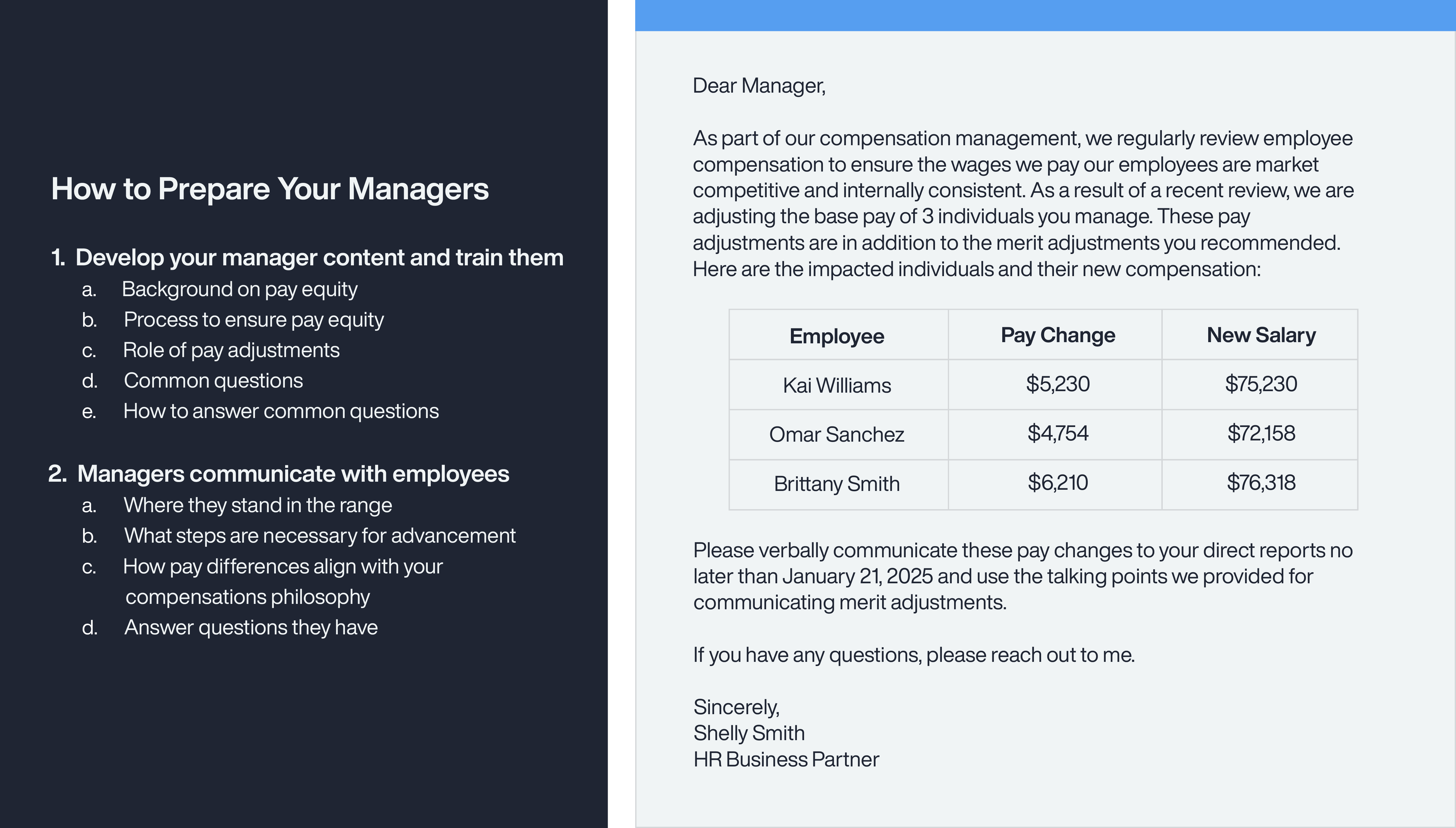
An even better approach is imploring and empowering your people leaders to be proactive and initiate pay discussions that disclose this information to employees. This, of course, should only be done in conjunction with a pay equity analysis and ensure any such unexplained pay disparities are resolved ahead of these proactive pay conversations.
With the caveat that your pay communications is grounded in a well structured and data-backed pay philosophy, the act of disclosing relevant details about compensation to employees engenders trust, which leads to greater employee buy-in and satisfaction.
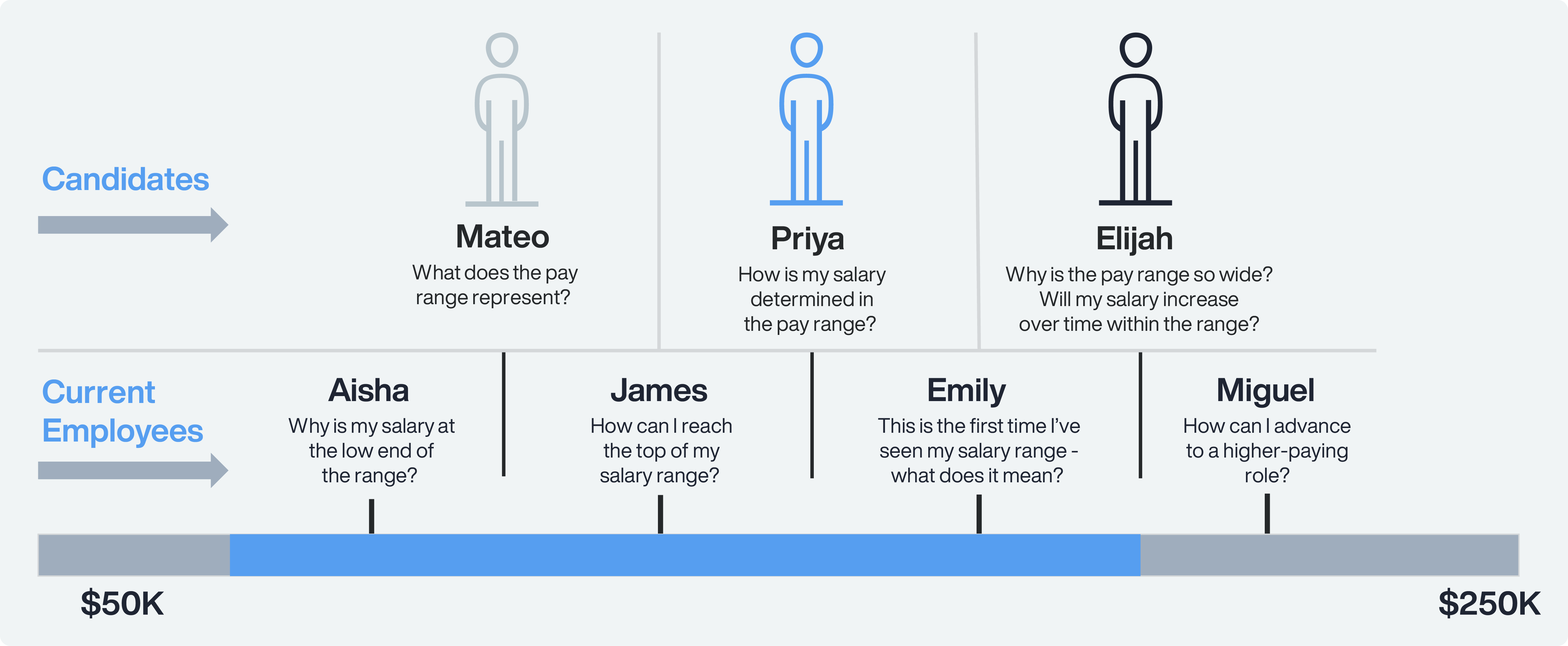
This doesn’t guarantee you won’t still have some turnover related to hurt feelings over pay. But it does guarantee the reason for the departure won’t be due to a lack of transparency. Deloitte research found that employees are 1.7 times more likely to be satisfied with compensation when there is pay transparency.
Further, Gartner research found that employees who perceive their pay as unequitable have a 15% lower intent to stay with their employer and are 13% less engaged at work than employees who perceive their pay as equitable. Educating and training people leaders to discuss your pay philosophy and practices addresses your employees.
It ensures you are in compliance with even the most rigorous of salary range disclosure laws, and will set you up for success to achieve your business and talent management strategy objectives.
“When organizations educate employees about how pay is determined, employee trust in the organization increases by 10% and pay equity perceptions increase by 11%.”
— Tony Guadagni, senior principal in the Gartner HR practice.
Develop your pay transparency roadmap
Like any significant business plan, pay transparency takes time. We recommend developing a timeline that fits your organization’s unique transparency plan. By now you should have a solid grip on where your organization is in your pay transparency journey. To develop your pay transparency roadmap, you need to determine the end destination. You can build a cohesive plan accordingly. Below is a roadmap example for an organization that is looking to achieve true transparency and must comply with the EU Directive.
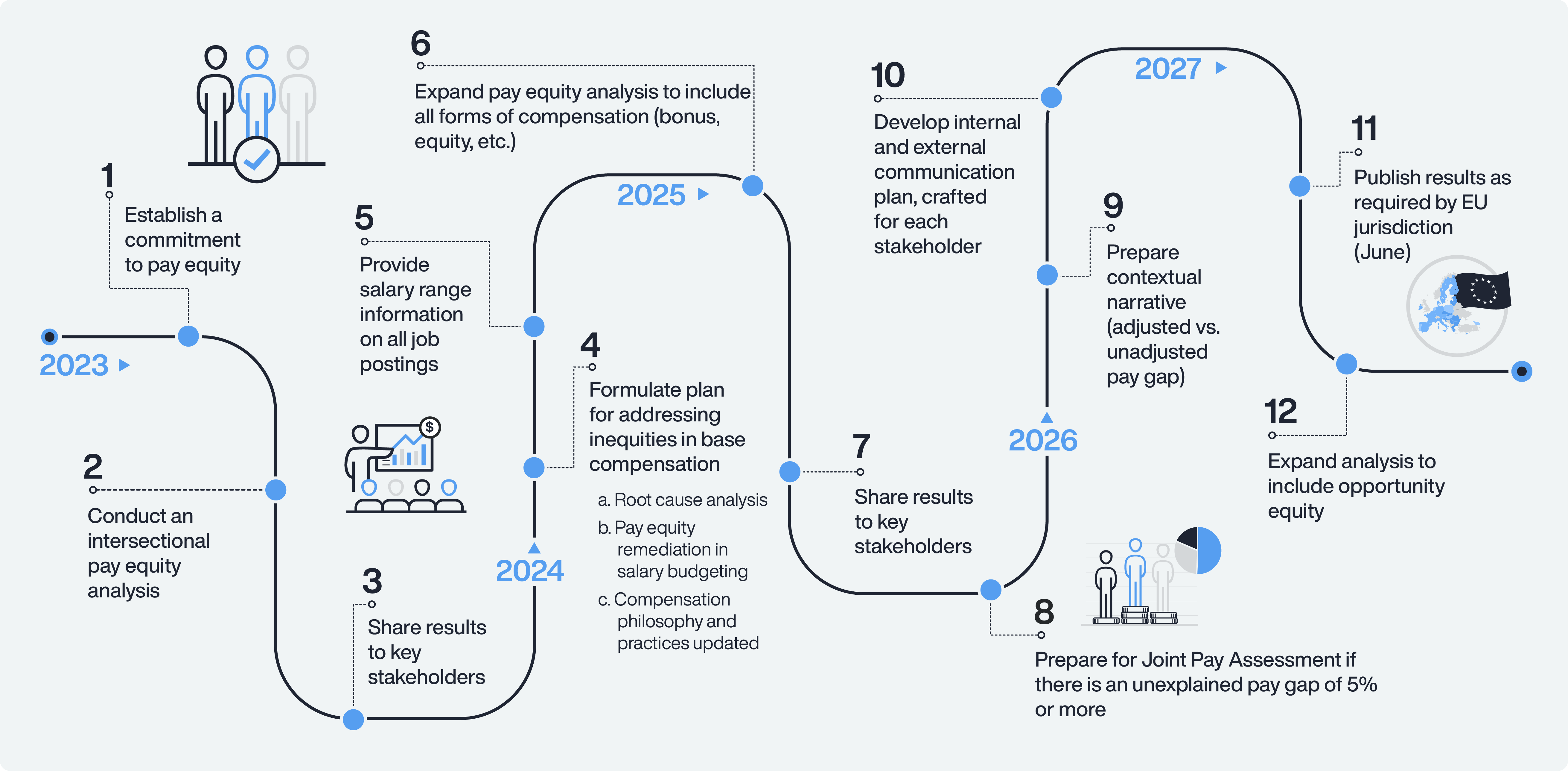
This is merely one example of how an organization can chart their path. The roadmap will depend on your organization’s unique situation.
If you need guidance formulating your unique pay transparency roadmap, we’re here to help.
Engage stakeholders for change management
To execute the pay transparency roadmap and your pay equity transparency strategy at large, you’ll need to engage your key stakeholders. One of the biggest obstacles to achieving pay equity and true transparency is getting leadership buy-in. Without buy-in from leadership, your plan is likely DOA. There are various other factors to account for in affecting change, but getting buy-in and alignment from leadership is priority No. 1. Here is a recommended action plan framework to best position your pay transparency efforts:
- Gain leadership buy-in and alignment.
- Engage all other key pieces of your decision-making unit to help you build (executives, HR business partners, TR and compensation leaders, legal).
- Effectively communicate the need for this change management and the important role each stakeholder will play in the execution.
- Set clear expectations and clearly defined roles and responsibilities.
- Leverage outside resources and third-party providers to streamline and reinforce the change management plan.
- Activate the plan and measure the results to fine-tune as needed.
Own the narrative: build your framework
No matter the level of your commitment to pay transparency, or which category you fall in, providing context for your pay equity situation is highly recommended. Dropping data into the universe without context, especially on a topic as sensitive as employee pay, is a recipe for disaster for your organization.
Conversely, creating an effective contextual narrative for your pay data reporting ensures transparency, builds trust, and demonstrates a commitment to workplace equity. It is important that you carefully construct a comprehensive narrative to explain the pay gap, in particular to avoid confusion between (a) the raw unadjusted pay gap which organizations must report on and (b) pay equity (sometimes referred to as the “adjusted pay gap”).
Below is a framework for developing your pay equity contextual narrative. For simplicity sake, this framework is focused solely on the gender pay gap. However, organizations should apply these same principles to race/ethnicity pay gaps, as this is already required in the U.S. and will soon become standard in pay data compliance.
The United Kingdom, for example, is poised to update their pay gap reporting requirements to include race/ethnicity and disability, underscoring the need for organizations to begin conducting true intersectional pay equity analyses.
Introduction
Objective: Set the stage for your organization’s commitment to pay equity. Describe the company’s commitment to pay equity. When describing your company’s commitment to equity, it’s important to articulate a clear and compelling narrative that reflects your values, initiatives, and long-term goals. It is often recommended that organizations begin with a statement from the CEO or a senior leader that underscores the importance of workplace equity to the company’s mission and values. For example: “At [organization name], we believe that workplace equity is not just a principle to aspire to, but a fundamental element of our success and identity. Our commitment to equity starts at the top and is woven into our culture.” The opening statement should serve as an introduction that sets the stage for a more detailed elaboration on your company’s comprehensive strategy for achieving workplace equity.
Instructions:
- Provide a Statement on Commitment to Pay Equity
- Describe the company’s commitment to pay equity
Legal and regulatory context
Objective: Provide the legal and regulatory background that mandates you share salary ranges on job postings and/or pay gap reporting. Explain why you are sharing salary range information and/or why a gender pay gap report is being created, its importance to the company, and the benefits of pay gap transparency. Provide a brief overview of the relevant legislation and regulations that mandate salary range transparency and gender pay gap reporting in the regions where the company operates. This sets the context for both and underscores their legal importance.
- Introduce the purpose:
- Clearly state why the report is being created.
- Example: “This gender pay gap report is part of our commitment to promoting transparency and equity within our organization.”
- Identify Relevant Legislation:
- Mention the specific laws and regulations that require your company to report on the gender pay gap.
- Example: “In compliance with the EU Pay Transparency Directive, the company is required to publish gender pay gap data.”
- Explain the purpose of the legislation:
- Describe the goals of these laws in promoting gender equality and transparency.
- Example: “These regulations aim to promote gender equality and transparency in the workplace by requiring employers to disclose pay gaps.”
- Explain the company’s alignment:
- Describe how the company aligns with the goals of the legislation.
- Example: “As we look toward the company’s future goals around diversity and inclusion, we appreciate the opportunity to conduct meaningful pay gap analyses and work to eliminate the gender pay gap in alignment with the Equality Act.”
Data, methodology, and results
Objective: Explain how data was collected and the methodology used to analyze it. Present metrics required for reporting.
- Give readers a fundamental understanding:
- Provide a clear explanation of what the gender pay gap is.
- Example: “The gender pay gap measures the difference in average earnings between men and women. Addressing this gap is crucial for ensuring fairness.”
- Describe the data collection process:
- Outline the steps taken to gather data accurately. You may want to have a detailed version for internal audiences, and a simple version for external audiences
- Ensure the data is accurate, validated, and comprehensively covers all relevant employee groups.
- Example: “We selected a snapshot date to capture a detailed picture of our pay data, including basic salary, bonuses, and benefits.”
- Outline key metrics calculated:
- List the key metrics used to analyze the pay gap.
- Example: “We calculated the mean and median gender pay gaps, bonus gaps, and the distribution of men and women across pay quartiles.”
- Explain the metrics:
- Provide clear definitions and explanations of metrics used (e.g., mean vs. median pay gap) to avoid misinterpretation.
- Example: “The mean gender pay gap is the difference in average hourly earnings between men and women, while the median gender pay gap is the difference in the middle value of hourly earnings between men and women.”
Explain the pay gap
Objective: Discuss the factors contributing to gender pay gaps in your organization, as well as any takeaways.
- Explain the influence of gender and race/ethnicity representation on the pay gap:
- Provide an analysis of gender representation across different roles and levels.
- Example: “The gender pay gap is primarily a result of an imbalanced distribution of men and women across all levels of our organization, particularly in senior roles.”
- Explain “adjusted” pay gap vs. the “unadjusted” pay gap:
- Provide a general explanation of the difference between the two:
- Example: “‘The pay gap’ and ‘pay equity’ are very different things. Unlike raw, unadjusted pay gap calculations, pay equity compares individuals by job roles – comparing equal pay for equal work. The gender pay gap, as defined by the Ireland Government, is the difference in the average hourly wage of all men and women across a workforce regardless of what type of job they hold or level of responsibility.”
- Describe your progress and impact:
- Some organizations may choose to report on year-over-year comparisons to show progress.
- Example: “The company is pleased to report a 4% reduction in the company’s raw pay gap over the last year.”
- Clarify historical and industry-specific challenges:
- The historical context of an industry often plays a significant role in shaping the current gender pay gap. Many industries, particularly those in technical or leadership-intensive fields, have traditionally been male-dominated. This long-standing imbalance has led to a perpetuation of gender disparities in hiring, promotion, and pay practices.
- Example: “The market in Ireland is important to Workday and has provided heavily desired tech talent to support our Product and Technology organization, our primary business segment in Ireland. These high-tech roles are well paid, but like our competitors in high-tech, are still heavily male dominated. This larger representation of men in our high-tech workforce in Ireland has led to a positive pay gap (males are paid higher on average). While we’re confident we pay fairly and equitably, we acknowledge we can do more to reach a better balanced workforce between men and women, especially in higher paid roles.”
- It may be advisable to index the gender pay gap figures in the context of industry standards and historical trends, especially if the organization is overperforming against industry averages.
- Example: “Although there is still a long way to go as we look toward the future of modern farming, it is encouraging that the company’s raw pay gap remains well below the reported farming industry average of 17%.” – See Full Workday Ireland Example
Ongoing commitment to pay equity
Objective: Detail the specific initiatives being implemented to address the pay gap. Some jurisdictions, like Ireland, require a narrative around corrective measures when pay gaps are identified. In other jurisdictions, the contextual narrative is optional. Given the reputational risk associated with publishing pay gap metrics, we highly recommend that all organizations accompany the publication of pay gap metrics with explanations, ongoing workplace equity initiatives and relevant action plans. Potential elements to consider are listed below.
- Pay equity processes
- Explain organizational policies and processes that help to ensure equitable pay.
- Example: “Through our market-based pay structure and annual pay equity review, we’re confident that our Workmates are paid equitably. During our annual pay parity analyses, we examine base salary, on-target earnings and annual stock refresh grants to pay according to the market value of every job. These reviews consistently reveal no disparities for greater than 99 percent of our workforce.” – See Full Workday Ireland Example
- Recruitment practices:
- Describe approaches to ensuring equitable hiring.
- Example: “We ensure diverse candidate pools for all roles and have partnerships with organizations that support women in tech.”
- Promotion policies:
- Describe how promotions are managed to ensure equity.
- Example: “Our promotion process is transparent and based on merit, with regular reviews to ensure fairness.”
- Leave policies:
- Detail policies supporting work-life balance.
- Example: “We offer generous parental leave policies and flexible work arrangements to support employees.”
- Benefits:
- Discuss benefits that support a diverse workforce.
- Example: “Our benefits package includes comprehensive health coverage, childcare support, and wellness programs.”
- Community engagement:
- Describe your community involvement and external partnerships.
- Example: “We collaborate with organizations that promote gender equity and support community initiatives aligned with our workplace equity goals.”
- Work environment:
- Describe your organizational culture and environment that supports equity.
- Example: “We strive to create an inclusive workplace where all employees feel valued and supported.”
- Actions and strategies:
- Detail the specific initiatives being implemented to address the pay gap.
- Example: “We have introduced mentorship programs and leadership training to support the advancement of women.”
- Salary transparency:
- Describe the organization’s commitment to salary transparency.
- Example: We are committed to “…Transparent communication of individual pay positions compared to internal and/or external benchmark.” – See Full Novartis Gender Pay Gap Report Example
Conclusion
Objective: Summarize the narrative and reiterate the company’s commitment to addressing the gender pay gap.
- Summarize key points:
- Recap the main themes and findings.
- Reiterate commitment:
- Reinforce the company’s dedication to addressing pay disparities.
- Example: “We will continue to monitor our progress, implement targeted initiatives, and share our results transparently to drive positive change.”
By following these steps, organizations can create a comprehensive and compelling contextual narrative for their pay data reporting, ensuring transparency and demonstrating a strong commitment to pay equity.
Share your narrative with stakeholders
Now that you have the framework for developing your contextual narrative, you can craft communication plans that are customized for each of your stakeholders. As we outlined above, some of these stakeholders might not be relevant for you at this point in time.
However, it’s important to consider each of them in your communication planning process. For ease of use, we’ve broken this down into five different audiences, three different levels of transparency, and the four recommended messengers for each communication. Using our interactive tool below, we’ll help you craft a communication plan that best fits your needs by selecting audiences and your level of transparency.
From there, we will recommend the messenger for each and what that sample communication should look like.
Create your custom pay transparency communications plan with the assistance of our Pay Transparency Communications Calculator. Get Started Now
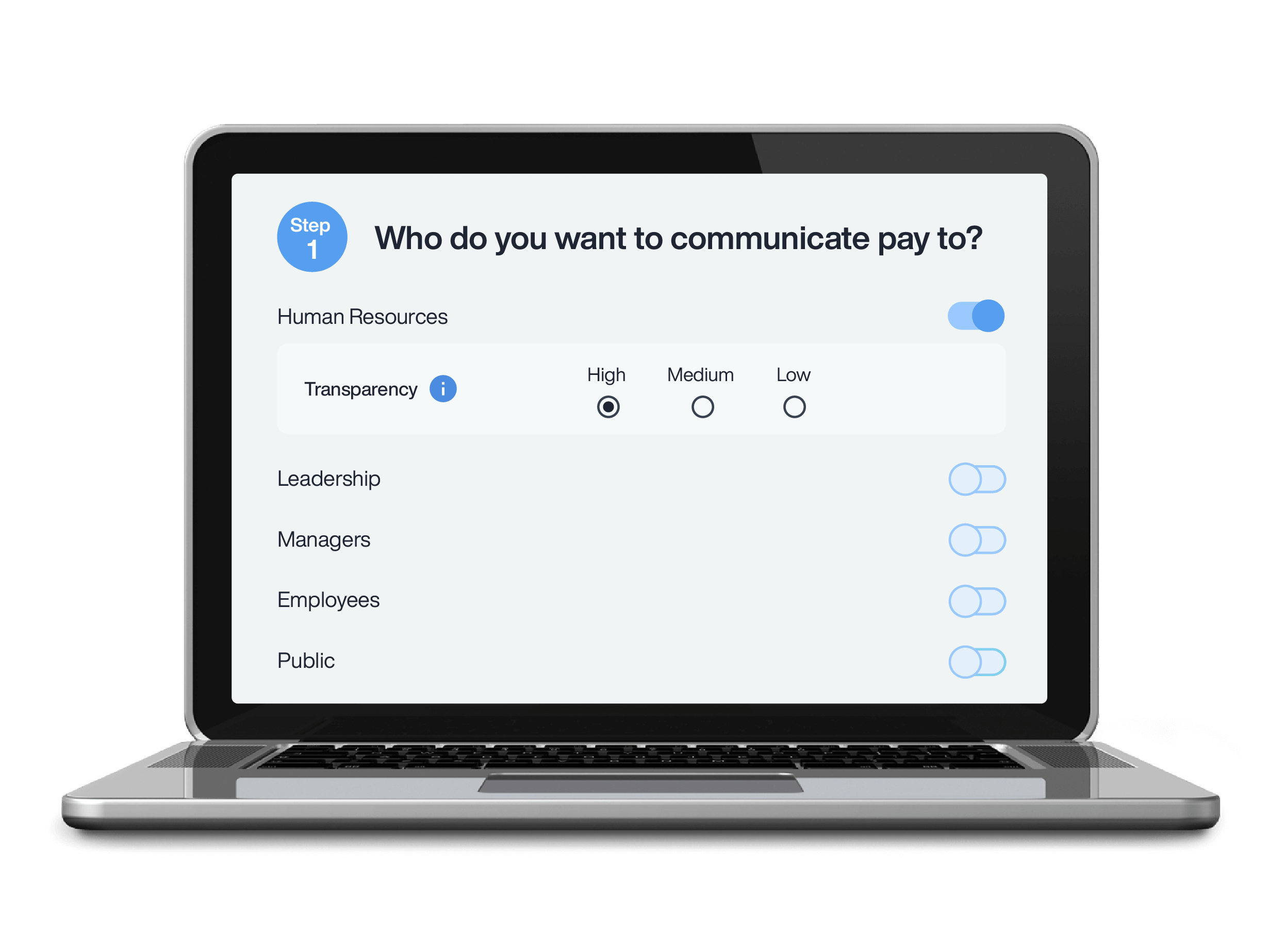 This guide is a starting point. You will need to tailor these communications to your unique needs. Trusaic will work with you to develop your stakeholder communications. We will provide guidance and support you as you craft a strategy that is appropriate for your organization and your desired level of transparency.
This guide is a starting point. You will need to tailor these communications to your unique needs. Trusaic will work with you to develop your stakeholder communications. We will provide guidance and support you as you craft a strategy that is appropriate for your organization and your desired level of transparency.
Proceed with confidence
The goal of pay transparency pay gap reporting laws is to promote practices that lead to a more equitable compensation environment.
If implemented thoughtfully and strategically, pay transparency can promote a better work environment where employees believe their pay is unbiased. However, pay equity is a moving target that requires a proactive approach. Pay transparency is the follow-on to your pay equity efforts. It requires attention to detail and meticulous planning to clearly communicate your progress to all stakeholders.
Trusaic can help you achieve all of your pay equity and pay transparency goals. Our Pay Equity Suite of Products with certified HCM integrations will streamline the process.
Learn how to embed pay equity into your sustainability reporting: Access On-Demand Webinar
Our comprehensive pay equity software solutions and on-demand expert support is with you every step of the way. With Trusaic, you can proceed with confidence, knowing you are working toward achieving pay equity with the backing of methodology that is legally compliant. Leverage our reporting capabilities and expert support to develop your contextual narrative.
Propel your organization to achieve True Transparency Status and reap the tangible business benefits that accompany it.







